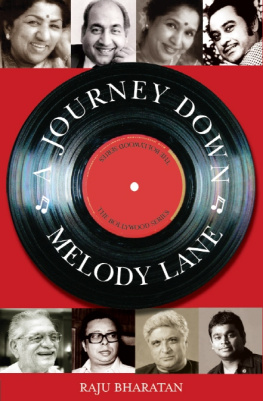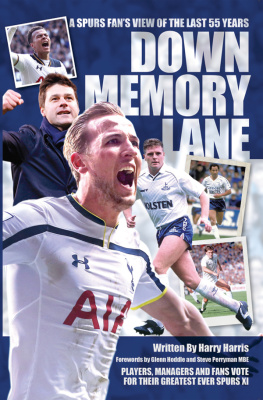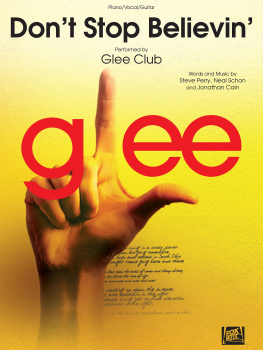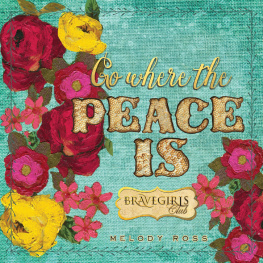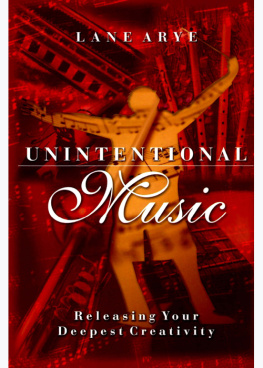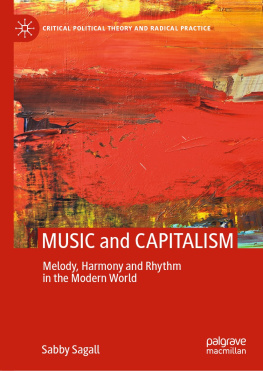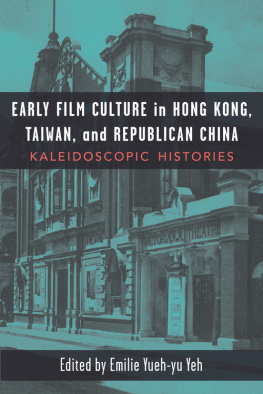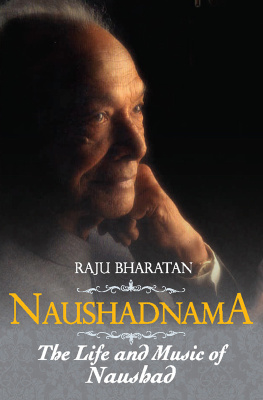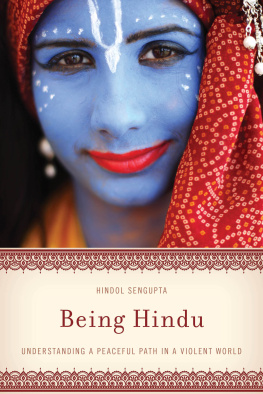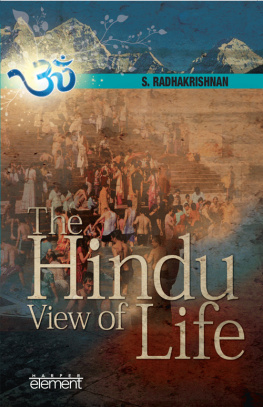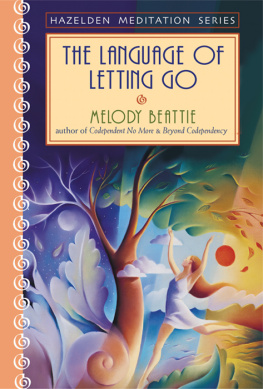Bharatan - A Journey Down Melody Lane
Here you can read online Bharatan - A Journey Down Melody Lane full text of the book (entire story) in english for free. Download pdf and epub, get meaning, cover and reviews about this ebook. City: New Delhi;India, year: 2011, publisher: Vearsa;Hay House Publishers India, genre: Detective and thriller. Description of the work, (preface) as well as reviews are available. Best literature library LitArk.com created for fans of good reading and offers a wide selection of genres:
Romance novel
Science fiction
Adventure
Detective
Science
History
Home and family
Prose
Art
Politics
Computer
Non-fiction
Religion
Business
Children
Humor
Choose a favorite category and find really read worthwhile books. Enjoy immersion in the world of imagination, feel the emotions of the characters or learn something new for yourself, make an fascinating discovery.
- Book:A Journey Down Melody Lane
- Author:
- Publisher:Vearsa;Hay House Publishers India
- Genre:
- Year:2011
- City:New Delhi;India
- Rating:4 / 5
- Favourites:Add to favourites
- Your mark:
- 80
- 1
- 2
- 3
- 4
- 5
A Journey Down Melody Lane: summary, description and annotation
We offer to read an annotation, description, summary or preface (depends on what the author of the book "A Journey Down Melody Lane" wrote himself). If you haven't found the necessary information about the book — write in the comments, we will try to find it.
A Journey Down Melody Lane — read online for free the complete book (whole text) full work
Below is the text of the book, divided by pages. System saving the place of the last page read, allows you to conveniently read the book "A Journey Down Melody Lane" online for free, without having to search again every time where you left off. Put a bookmark, and you can go to the page where you finished reading at any time.
Font size:
Interval:
Bookmark:
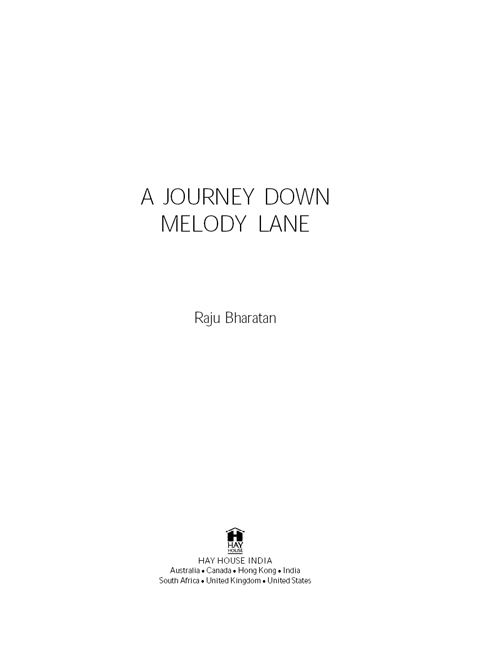
Hay House Publishers (India) Pvt. Ltd.
Muskaan Complex, Plot No.3, B-2 Vasant Kunj, New Delhi-110 070, India
Hay House Inc., PO Box 5100, Carlsbad, CA 92018-5100, USA
Hay House UK, Ltd., 292-B Kensal Rd., London W10 5BE, UK
Hay House Australia Pty Ltd., 18/36 Ralph St., Alexandria NSW 2015, Australia
Hay House SA (Pty) Ltd., PO Box 990, Witkoppen 2068, South Africa
Hay House Publishing, Ltd., 17/F, One Hysan Ave., Causeway Bay, Hong Kong
Raincoast, 9050 Shaughnessy St., Vancouver, BC V6P 6E5, Canada
Email: contact@hayhouse.co.in
www.hayhouse.co.in
Copyright Raju Bharatan 2010
The moral right of the author has been asserted.
The views and opinions expressed in this book are the authors
own and the facts are as reported by him, which have been verified
to the extent possible, and the publishers are not in any way
liable for the same.
All rights reserved. No part of this publication may be reproduced,
by any mechanical, photographic, or electronic process, or in
the form of a phonographic recording, nor may it be stored
in a retrieval system, transmitted, or otherwise be copied for
public or private use other than for fair use as brief quotations
embodied in articles and reviews, without prior written
permission of the publisher.
ISBN 978-81-89988-91-3
Printed and bound at
Saurabh Printers Pvt. Ltd., New Delhi
To
My wife, the late Girija Rajendran,
and also
to
Shilpa, Sriganesh,
Sucharita, Sachin
Contents
Lata Mangeshkar remains, in my euphonious esteem, the greatest singer ever to be heard in Hindustani cinema. But for Latas inspirational vocalizing, I would never have started writing on music.

W hen more than 15 years ago Lata Mangeshkar: A Biography (written by me) was published, there were very few books on music idols. But with the passage of time, a variety of publications in this genre made an appearance, crystallizing into a trend. What one misses, however, is a kaleidoscopic work that views vintage musically Hindustani cinema through the luminous prism of the galaxy of stars upon whom all those vintage numbers came to be audio-visually immortalized. In other words, a book cinematically highlighting the tuneful contribution, to our film lore, not only of music makers, lyric writers and singers but also of such exceptionally creative wavemakers as Raj Kapoor, Dev Anand, Vijay Anand, Guru Dutt and Yash Chopra.
A Journey Down Melody Lane is ideated as such a breakaway book epitomizing the Musey musicality of the motion picture in India. It examines, in sonorous detail, how the timeless music we (at least the aficionados) so cherish came to be crafted by a Naushad Ali via a Mohammed Rafi; a Madan Mohan via a Lata Mangeshkar; and an O. P. Nayyar via an Asha Bhosle. It expressively explores our treasure trove to spread out, before rasiks, gems so polished as to make our silver screen an eye-filling phantasmagoria. It comes up with fascinating nuggets of information that whet the appetite to know more about films in general and film music in particular.
I am grateful to Doordarshan (as Indian TVs torch-bearer) for conferring upon me the title of film historian. For all that, I am a listener first, a chronicler after. That is why I feel bewildered when I find a slew of writers and commentators (both in print and electronically) today presuming to hold forth on the nitty-gritty of Hindustani cinesangeet as if they were there when it all happened in the golden age of film music. If they were there, I never saw them. I regularly beheld, at such 1950s 1960s song recordings and music sittings, only Jitubhai Mehta (of the Gujarati Vandemataram and Bombay Samachar) alongside SCREEN photographer-reporter R. M. Kumtakar.
While a music recording happens with everything rehearsed and ready, a song sitting is where you get to witness the numbers writer, composer and singer indulging in the scale of nok-jhonk (give and take) bringing a certain rounding to the tuning. Like, for instance, lyricist Hasrat Jaipuri apostrophizing it as Chashm-e-bad door to complete Teree pyaaree pyaaree soorat ko kissee kee nazar na lage as the Jaikishan take on B. Saroja Devivia the 1961 come-over-to-Sasural overtures of a Rajendra Kumar vocally vindicated by Mohammed Rafi. You think the Teree pyaaree pyaaree tune was final and ready for recording after that? Perish the thought! A week passed in further refining the tune for it to acquire the razzledazzle it did on the screen.
As a fresher still, I watched entranced as, first, Jitubhai Mehta and then R. M. Kumtakar softly ventured to offer their mellifluent impressions to the tunes composer. If O. P. Nayyar genuinely valued Mehtas insights, Madan Mohan habitually turned to Kumtakar for final ghazal approval. To think that I joined the MehtaKumtakar twosome only because cinema coverage got to be contemptuously assigned to me after all those intellectual heavyweights (manning The Illustrated Weekly of India in The Times of India Building at Bombays Bori Bunder) considered it beneath their dignity to handle something so demeaning as films!
Thus did popular cinema and quality music mingle in my bloodstream over a period of 60 years. It therefore amuses me no end upon being authoritatively told, on TV, that ace composer C. Ramchandra created all nine songs of Azaad (1955) during a single nights sitting! Its but the mere outline of a tune you could get in a flash, C. Ramchandra enlightened me. Recording the song after that is a humdrum process consuming a minimum of two-to-three days even when rushed, as we were on Azaad. No composer on earth could conjure a tune and takeit in the same breath. Each Lata tune needs nursing in the heart and mind.
Let no one therefore dare tell you that any tune got done in two shakes of a ducks tail. It might sound great to hear that R. D. Burman songscaped Asha Bhosle (to go on Zeenat Aman) as Dum maaro dum with a snap of the fingers, but the ground reality is quite something else. The aim of this book, therefore, is to set the gramophone record straight for instance, by noting that Lata Mangeshkars entry of 30,000 songs in the Guinness Book of World Records was officially expunged in 1990 itself. In underpinning such fragments of fact, the integrated effort is to orchestrate our evergreen music in an idiom designed to offer a grandstand view of the 60 song-laden years spanning the 19472007 musical spectrum. Nor is the music made before 1947 and after 2007 by any means underplayed for I have updated my musings to embrace the period up to the arrival of A. R. Rahman.
It was in a Rahman-era newspaper supplement, HT Caf of the Hindustan Times, that I resumed writing on our song treasury via a column titled Mausam Hai Musicanaat the invitation of cineaste Khalid Mohamed. After doing a number of such columns, I obtusely lost, on the computer, each piece so written! This was when my perceptive musical admirer, Rupa Dore (sitting in the Hollywood heart of Los Angeles), magically materialized, on my computer, to retrieve each such piece for me. But for Rupa and her spot audio-visual feedback, this book could not have been undertaken. If only because those HT Caf contributions represent some of the source material in shaping this book something for which I sincerely thank the HT Group in the face of having proceeded to expand each such 450-word column! The stimulus for the books mood-setting opening chapter (The Talkie in Its Walkie Teens) came from a musical odyssey I undertook for the prestigious
Next pageFont size:
Interval:
Bookmark:
Similar books «A Journey Down Melody Lane»
Look at similar books to A Journey Down Melody Lane. We have selected literature similar in name and meaning in the hope of providing readers with more options to find new, interesting, not yet read works.
Discussion, reviews of the book A Journey Down Melody Lane and just readers' own opinions. Leave your comments, write what you think about the work, its meaning or the main characters. Specify what exactly you liked and what you didn't like, and why you think so.

